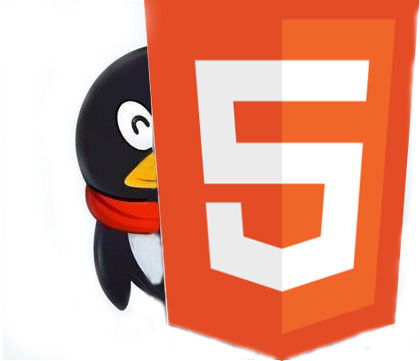Brief discussion on rules and detailed explanation examples tutorial
The following editor will bring you a detailed explanation of HTML5 tag nesting rules [must read]. The editor thinks it’s pretty good, so I’d like to share it with you now, and give it a reference. In HTML5, the child elements of the element can be block-level elements, which was considered against the rules before. This article will introduce in detail the classification of tag nesting rules of HTML5. Before the emergence of HTML5, elements were often distinguished according to block, inline, and inline-block. In HTML5, elements are no longer distinguished by display attributes, but by content models. Divided into metadata content, sectioning content, heading content, flow content, phrasing content, embedded content, and interactive (interactive content). Elements that do not belong to any one category are said to be penetrating; elements may belong to different categories
1. Parsing tag nesting rules in HTML5

Introduction: The editor below will bring you a detailed explanation of HTML5 tag nesting rules [must read]. The editor thinks it is quite good, so I will share it with you now and give it as a reference
2. XML Development Basics-Detailed Explanation of XML Grammar Rules

Introduction: The syntax rules of XML are very simple and very logical. These rules are easy to learn and easy to use. All XML elements must have closing tags. In HTML, you often see elements without closing tags:
3. Detailed introduction to PHP pseudo-static graphic and text code

Introduction: PHP pseudo-static using apache to implement pseudo-static Step 1 httpdconf to comment Step 2 Change and rewrite Permissions Step 3 Add pseudo-static rules as needed Detailed explanation of rewrite rules Entry-level RewriteRule indexhtml indexphp Novice-level RewriteRule index-a-z0-9html indexphpname1 Advanced-level RewriteRule a-z1-0-91html indexphpname1age2
4. Detailed explanation of ESLint rules (1)

Introduction: Nicholas, the master of the front-end world ESLint, developed by C. Zakas in 2013, greatly facilitates code specification checking of Javascript code. This tool contains more than 200 Javascript coding standards and runs quickly. It is an essential auxiliary tool for almost every front-end project. However, with so many rules, what is the starting point for the design of each rule, and how should we choose the rules that are suitable for our own projects have become new problems. Not long ago, the project I was working on started to require code standards for front-end code, so we sorted out the 230 rules in eslint in detail. I have excerpted some of the more important or special rule columns
5. Detailed explanation of PHP syntax rules

Introduction: 1. Simple syntax rules (delimit variable names with braces, applicable to all versions of PHP): $a = 'flower'; echo "She received some $as" ;; // Invalid; the letter s will be treated as a valid variable name component, but the variable here is $a echo "She received some ${a}s"; // Valid echo "She received som ...
6. Detailed explanation of location matching rules
Introduction::This article mainly introduces the detailed explanation of location matching rules. Students who are interested in PHP tutorials can refer to it.
7. Rules in yii2 Detailed explanation of custom verification rules rules card yii rules techrules
Introduction: rules: Detailed explanation of custom validation rules in rules in yii2: One of the powerful features of yii2 is its Form component, which is both convenient and safe. Some friends feel that after using Yii for a while, it seems to be nothing but "difficult to understand" than TP. The leader arranged for a registration function, but this guy used Baidu's various good form styles, and Baidu's validate verification. I really felt sorry for this guy. Of course, without further ado, our focus is to use ActiveForm and how to implement custom validation rules. Let’s talk about the scenario first: Conditions: ①. There are two fields, A and B
8. phison-up10 mass production tool v1.78.00 Detailed introduction to PHP syntax rules
Introduction: phison-up10 mass production tool v1.78.00: phison-up10 mass production tool v1.78.00 Detailed explanation of PHP syntax rules for entry learning: 1. Simple syntax rules (use Curly braces define variable names, applicable to all versions of PHP): Copy the code as follows: $a ='flower'; echo "She received some $as";// Invalid; the letter s will be regarded as a valid variable name component. But the variable here is $a echo "She received some ${a}s";// effective echo "She received some {$a}s"
9. Detailed explanation of common rules for php curly braces
Introduction: Detailed explanation of common rules for php curly braces
10. Detailed explanation of PHP syntax rules Introductory Learning_PHP Tutorial
#Introduction: Detailed explanation of PHP syntax rules for introductory learning. 1. Simple syntax rules (delimit variable names with braces, applicable to all versions of PHP): Copy the code as follows: $a ='flower'; echo "She received some $as";// Invalid; the letter s will be treated as
The above is the detailed content of Brief discussion on rules and detailed explanation examples tutorial. For more information, please follow other related articles on the PHP Chinese website!

Hot AI Tools

Undresser.AI Undress
AI-powered app for creating realistic nude photos

AI Clothes Remover
Online AI tool for removing clothes from photos.

Undress AI Tool
Undress images for free

Clothoff.io
AI clothes remover

AI Hentai Generator
Generate AI Hentai for free.

Hot Article

Hot Tools

Notepad++7.3.1
Easy-to-use and free code editor

SublimeText3 Chinese version
Chinese version, very easy to use

Zend Studio 13.0.1
Powerful PHP integrated development environment

Dreamweaver CS6
Visual web development tools

SublimeText3 Mac version
God-level code editing software (SublimeText3)

Hot Topics
 1377
1377
 52
52
 How to run the h5 project
Apr 06, 2025 pm 12:21 PM
How to run the h5 project
Apr 06, 2025 pm 12:21 PM
Running the H5 project requires the following steps: installing necessary tools such as web server, Node.js, development tools, etc. Build a development environment, create project folders, initialize projects, and write code. Start the development server and run the command using the command line. Preview the project in your browser and enter the development server URL. Publish projects, optimize code, deploy projects, and set up web server configuration.
 What exactly does H5 page production mean?
Apr 06, 2025 am 07:18 AM
What exactly does H5 page production mean?
Apr 06, 2025 am 07:18 AM
H5 page production refers to the creation of cross-platform compatible web pages using technologies such as HTML5, CSS3 and JavaScript. Its core lies in the browser's parsing code, rendering structure, style and interactive functions. Common technologies include animation effects, responsive design, and data interaction. To avoid errors, developers should be debugged; performance optimization and best practices include image format optimization, request reduction and code specifications, etc. to improve loading speed and code quality.
 How do I handle user location privacy and permissions with the Geolocation API?
Mar 18, 2025 pm 02:16 PM
How do I handle user location privacy and permissions with the Geolocation API?
Mar 18, 2025 pm 02:16 PM
The article discusses managing user location privacy and permissions using the Geolocation API, emphasizing best practices for requesting permissions, ensuring data security, and complying with privacy laws.
 How to make h5 click icon
Apr 06, 2025 pm 12:15 PM
How to make h5 click icon
Apr 06, 2025 pm 12:15 PM
The steps to create an H5 click icon include: preparing a square source image in the image editing software. Add interactivity in the H5 editor and set the click event. Create a hotspot that covers the entire icon. Set the action of click events, such as jumping to the page or triggering animation. Export H5 documents as HTML, CSS, and JavaScript files. Deploy the exported files to a website or other platform.
 How do I use the HTML5 Drag and Drop API for interactive user interfaces?
Mar 18, 2025 pm 02:17 PM
How do I use the HTML5 Drag and Drop API for interactive user interfaces?
Mar 18, 2025 pm 02:17 PM
The article explains how to use the HTML5 Drag and Drop API to create interactive user interfaces, detailing steps to make elements draggable, handle key events, and enhance user experience with custom feedback. It also discusses common pitfalls to a
 What application scenarios are suitable for H5 page production
Apr 05, 2025 pm 11:36 PM
What application scenarios are suitable for H5 page production
Apr 05, 2025 pm 11:36 PM
H5 (HTML5) is suitable for lightweight applications, such as marketing campaign pages, product display pages and corporate promotion micro-websites. Its advantages lie in cross-platformity and rich interactivity, but its limitations lie in complex interactions and animations, local resource access and offline capabilities.
 Does H5 page production require continuous maintenance?
Apr 05, 2025 pm 11:27 PM
Does H5 page production require continuous maintenance?
Apr 05, 2025 pm 11:27 PM
The H5 page needs to be maintained continuously, because of factors such as code vulnerabilities, browser compatibility, performance optimization, security updates and user experience improvements. Effective maintenance methods include establishing a complete testing system, using version control tools, regularly monitoring page performance, collecting user feedback and formulating maintenance plans.
 html next page function
Apr 06, 2025 am 11:45 AM
html next page function
Apr 06, 2025 am 11:45 AM
<p>The next page function can be created through HTML. The steps include: creating container elements, splitting content, adding navigation links, hiding other pages, and adding scripts. This feature allows users to browse segmented content, displaying only one page at a time, and is suitable for displaying large amounts of data or content. </p>




